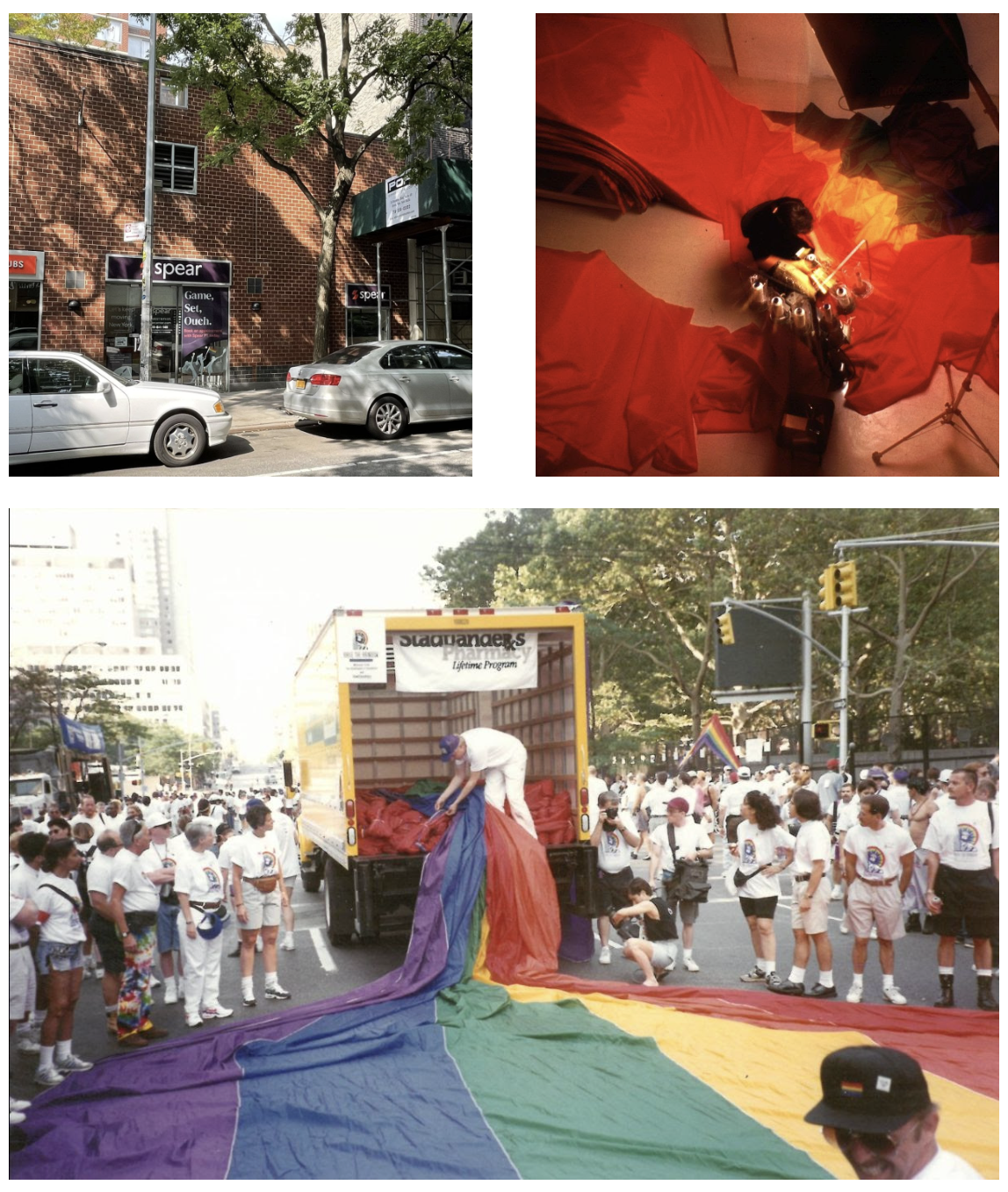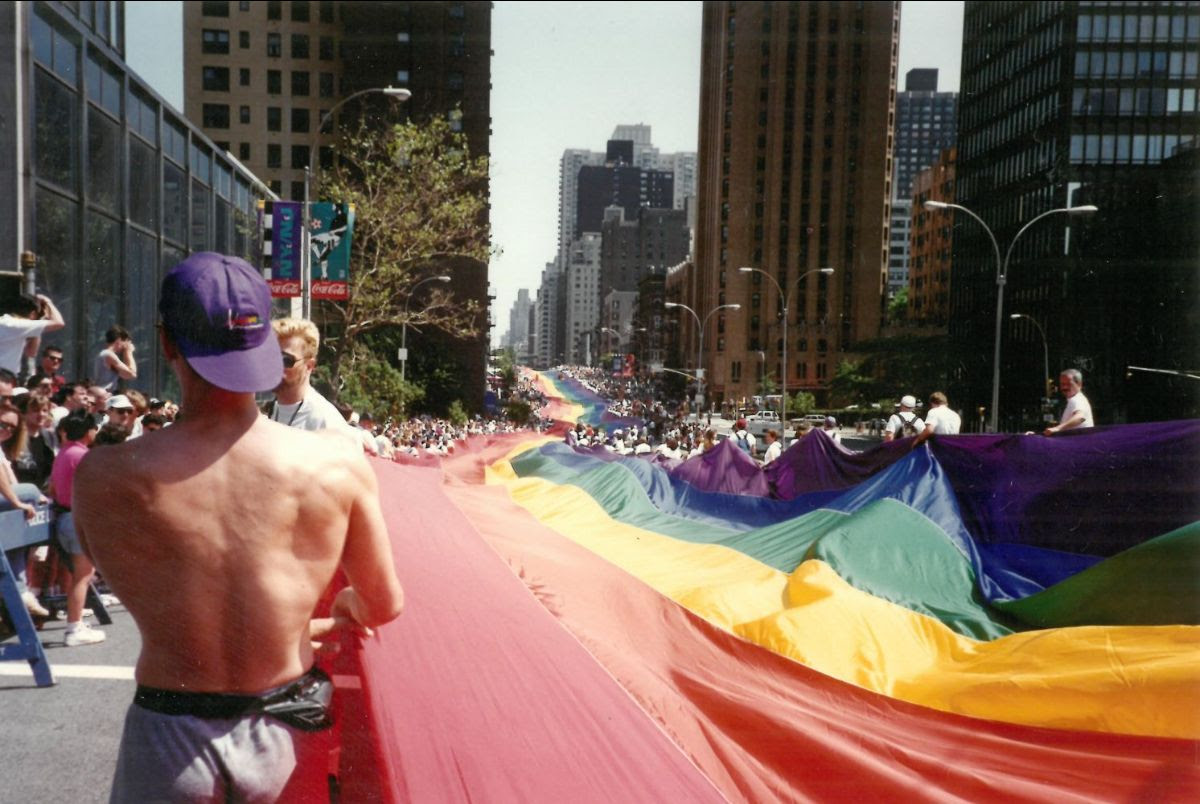Month: November 2023
Project co-directors Discuss the Power of Place on WNYC’s “All of it With Alison Stewart”
November 20, 2023
 “We all believe very strongly in the power of place,” co-director Andrew Dolkart shares on WNYC’s “All Of It With Alison Stewart,” in response to the question of how the Project got its start. He continues that before the Project, as professional preservationists, “We were interpreting all kinds of history, but we weren’t interpreting our own [LGBT] history.” REPLAY the full interview and listener call-in session via link in bio!
“We all believe very strongly in the power of place,” co-director Andrew Dolkart shares on WNYC’s “All Of It With Alison Stewart,” in response to the question of how the Project got its start. He continues that before the Project, as professional preservationists, “We were interpreting all kinds of history, but we weren’t interpreting our own [LGBT] history.” REPLAY the full interview and listener call-in session via link in bio!
How is learning about history through place meaningful? Co-director Ken Lustbader had the answer: it allows you to “have a visceral connection to the past and see where history took place. For example, you could look at the place where James Baldwin lived on the Upper West Side and you can see the doorway that he went into, to his apartment on the ground floor. That’s a definite connection to an individual who was so important to American history. And it’s different than simply reading about it in a book … *There’s* the location, and *that’s* the connection.”
The episode highlighted the work of co-director Jay Shockley to document LGBT associations with Broadway theaters and the numerous National Register of Historic Places nominations researched and drafted by project manager Amanda Davis.
Listen to the full story below, and on WNYC’s website
The Project’s Amanda Davis Testifies in Support of Paul Rudolph Landmark Designation
November 28, 2023
Today, the NYC Landmarks Preservation Commission held a public hearing to hear testimony on Paul Rudolph’s Modulightor Building. Project manager Amanda Davis was on hand to offer testimony in support of designation of this important building.
See Amanda’s full testimony below:
Testimony in Support of the Proposed Designation of the Modulightor Building, 246 East 58th Street, Manhattan, as a New York City Landmark
Tuesday, November 28, 2023
My name is Amanda Davis and I am the project manager of the NYC LGBT Historic Sites Project, a cultural heritage initiative founded by historic preservationists in 2015 to document historic places connected to the lesbian, gay, bisexual, and transgender community in the city’s five boroughs.
The Project strongly supports the designation of The Modulightor Building as a New York City Landmark. The building was designed by eminent architect and iconic modernist Paul Rudolph, who was openly gay. While this would not be the first LPC-designated landmark designed by an LGBTQ architect, the designation of The Modulightor Building has the opportunity to be the first in the LPC’s history to officially acknowledge an architect’s gay identity. This provides a small but important step in making LGBTQ history visible. The Modulightor Building is one of over 450 historic places our project has documented that illustrate the contributions that LGBTQ people have made to New York and American history and culture. It is also included in our website’s “Art & Architecture” thematic collection of sites, in order to celebrate the impact of LGBTQ people on the city’s built environment.
Paul Rudolph and Ernst Wagner, who lived and worked together until Rudolph’s death, founded Modulightor in 1975. They developed a system of lighting fixtures that could be combined in countless variations, as well as furniture and other interior accessories. In 1990, Modulightor moved into a four-story building at 246 East 58th Street, which Rudolph and Wagner jointly purchased the year before. Rudolph modified the existing structure, moving his architectural office to the second story. Modulightor’s showroom and production facility occupied the ground story, mezzanine, and three sub-basements.
The interior was the last in New York City completed by Rudolph during his lifetime, with work based largely on his plans continuing after his death. The building was left to Wagner in Rudolph’s will, and Wagner worked with others to create the Paul Rudolph Foundation in 2001. The subsequent Paul Rudolph Heritage Foundation now occupies the second story. The Foundation notes that “The Modulightor building is the only intact and publicly accessible building designed by Paul Rudolph in New York City.” In addition, it is one of three residential townhouse buildings in Manhattan that display Rudolph’s contributions to American architecture in the 20th century. And it would join a select handful of significant Modernist townhouses in Manhattan to be designated.
The NYC LGBT Historic Sites Project proudly supports this proposed designation.
Thank you.
The Project Publishes its 450th NYC Site Entry
November 2, 2023
The NYC LGBT Historic Sites Project, an award-winning initiative committed to documenting and presenting historic sites connected to the LGBT community throughout New York City, has published the 450th entry to its map of extant NYC buildings, parks, monuments and other places that connect us to the City’s significant LGBT history.
“Reaching 450 LGBT historic sites is an incredible milestone for our project. With new entries like the Chelsea workshop where Gilbert Baker and volunteers sewed the record-breaking mile-long Rainbow Flag for Stonewall 25 in 1994, we continue to shed light on the LGBT history that exists all around us. It’s empowering, especially for queer and trans youth, to learn these stories and to see where they happened.” — Amanda Davis, Project manager
This major milestone comes after eight years of work on the part of the Project team—co-directors Andrew Dolkart, Ken Lustbader and Jay Shockley, plus Project manager Amanda Davis. Founded in 2015, the Project is at once a scholarly initiative and an educational resource for teachers as well as the general public, who may peruse the site and use the Curated Themes as avenues for self-guided discovery.
As the Project team continues its important work in NYC, it is simultaneously a model for other initiatives beyond the five boroughs and a leader in the national conversation on site-based research, advocacy and preservation. The Project was recognized by the National Trust for Historic Preservation with its prestigious Trustees’ Award for Organizational Excellence in 2022, one of the preservation field’s highest honors. The Project is also increasing LGBT representation on the National Register of Historic Places—the federal government’s honorary list of sites deemed significant to American history—in fulfillment of a Underrepresented Communities grant from the National Park Service. Though the National Register includes over 96,600 sites across the country, the LGBT community remains vastly underrepresented—only four sites provided a focus on LGBT history in 2014. Including 10 sites completed through the Project’s grant-funded work, such as the Alice Austen House on Staten Island and the James Baldwin Residence in Manhattan, the number of National Register sites with LGBT representation is now up to 30.
Next, the Project is focused on completing the significant undertaking of adding an LGBT “overlay” to the Greenwich Village Historic District, elevating the history and importance of LGBT individuals and organizations connected to nearly 250 of the more than 1,900 buildings included in the district, originally listed on the National Register of Historic Places in 1979. Extant sites will now be further understood for their connection to people and events of the LGBT community and movement because of the Project’s work.
The Project team continues to expand the website’s coverage of sites across the five boroughs, and publishes new entries regularly.

From the website, www.nyclgbtsites.org:
For the Pride March associated with Stonewall 25, held in New York City in June 1994, activist Gilbert Baker envisioned a mile-long Rainbow Flag. Baker moved from San Francisco to New York at the end of 1993. The basement commercial space at 269 West 16th Street became his “Raise the Rainbow” workshop. In anticipation of long hours of sewing, he had white linoleum floors installed to reflect more light in the space. The walls, including the pipes, were painted white and big banks of fluorescent lights ran the length of the room. He also specified the location of a staircase (still there) so that the finished flag could be transported to street level more easily. The workshop accommodated 18 “refrigerator-sized crates,” each holding a bolt of fabric and weighing 400 pounds.
Completed in early June, the mile-long flag, which was entered into the Guinness Book of World Records, weighed 7,000 pounds and measured 30 feet in width. However, the project faced issues from the start … Baker felt that “Stonewall 25 was ultimately a commercial for marketing and merchandising the movement, an advertisement of power rather than an act of empowerment.” He decided, early in the morning of June 25, 1994, the day of the Pride March, to secretly veer from the agreed upon plan; once the flag, carried by about 5,000 volunteers, reached First Avenue and East 57th Street, Baker, wearing a handmade sequined gown, surprised nearly everyone by cutting the front of the flag into ten large sections. He and several friends each carried a section to an alternate, non-permitted Fifth Avenue march that had been planned to bring attention to the AIDS epidemic.
Images of the Rainbow Flag on both avenues made the front page of the New York Times and other outlets, turning the flag, 16 years after its creation, into a globally recognized icon.
To read more, visit the website entry.


Photos, top to bottom, left to right: (1) Gilbert Baker at the Chelsea workshop, 1993. Photo by Mick Hicks, courtesy of the Gilbert Baker Foundation; (2) Exterior of 269 West 16th Street, Manhattan; (3) Gilbert Baker sewing the mile-long Rainbow Flag at the Chelsea workshop. Photo by Mick Hicks, courtesy of the Gilbert Baker Foundation; (4) Tom Taylor unties the Flag as it is removed from the truck at NYC Pride, June 1994. Photo by Charley Beal. Courtesy of the Gilbert Baker Foundation; (5) The mile-long Rainbow Flag on First Avenue, looking north from East 48th Street, at NYC Pride, June 1994. Photo by Charley Beal. Courtesy of the Gilbert Baker Foundation.